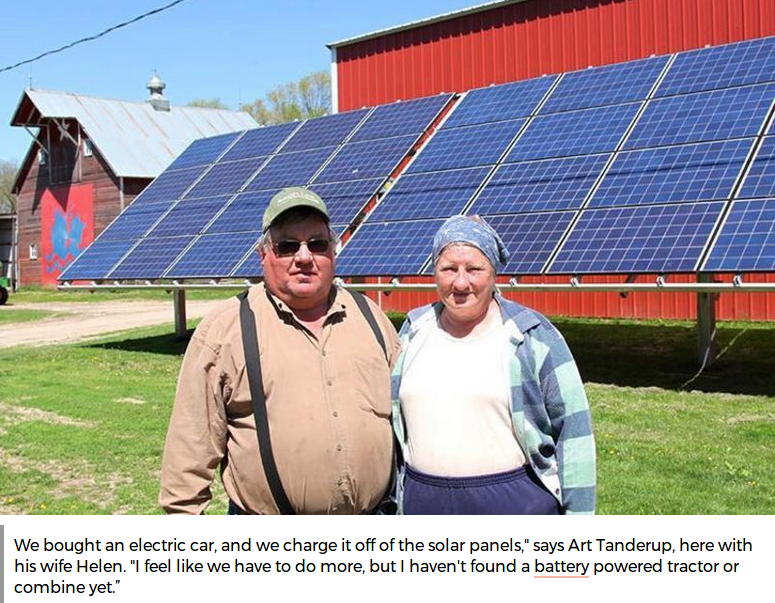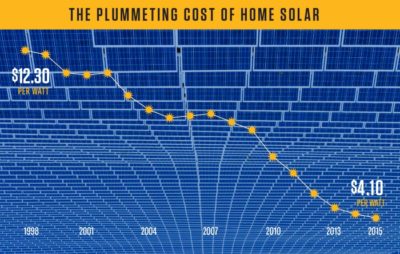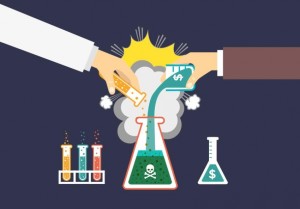
The organizing cohesiveness of BOLD Nebraska over the years to forge common ground between disparate socio-political interests fighting Keystone XL has been instructive and inspirational. While adjoining states, and U.S. officials alike, have had mixed success resisting the oilagarchy, the people of Nebraska have single handedly stopped TransCanada on multiple fronts – direct action, the courts, the Nebraska Public Service Commission, and creative actions like solar installations along the route of the pipeline. This kind of success can be achieved only by presenting a united front, united only due to mutual respect. The BOLD Nebraska folks, under Jane Kleeb’s guidance, listened to the concerns of conservative farmers and ranchers, school districts, water districts, and tradesmen to build an awareness of the pipeline’s likely impact on their livelihood. The learning curve has been methodical and steady, and has paid off when you read comments like this: “I think if not for Bold, the pipeline would be in today”, says Art Tanderup. Tanderup found that his 160 acre farm, that has been in his wife’s family for 101 years, is in Keystone’s way. “[Jane Kleeb] was the glue that kept us landowners together, and kept the organizing that happened in the state going.” Kleeb related this tale. “About two or three years into the fight, one of the farmers came up to me and asked if I had ever heard of the documentary ‘An Inconvenient Truth’. I started to laugh — I told him that indeed I had, but it’d been a while. And he was like, ‘Well, my daughter got me a Netflix subscription for Christmas, and I’ve been watching all of these documentaries on climate change, and man, we really should have been listening to Al Gore.'”
An article in Popular Science provides insight into the issues, the stakes, and the success of BOLD Nebraska. “Perhaps if TransCanada hadn’t first proposed to put the pipeline not only through a cherished region, but one that rests atop the state’s most precious resource, they would not have encountered such fierce resistance. But they did. And so from the beginning, as it were, the balances were not correct. Nebraskans really, really love their aquifer. Jane Kleeb noted,’There’s books, there’s songs, there’s poetry about the Ogallala Aquifer. We don’t have a ton of corporate agriculture in our state. It’s still family farms and ranches of people who homesteaded in the 1800s, still being run by those same families. Nebraska is kind of unique in that sense.

“‘Everything we do here is out of that aquifer’ says Tanderup, who grows mostly corn, soy, rye, and cover crops on his farm. ‘We drink it, the livestock drink it, we irrigate with it, and we water our gardens with it. It’s our water.’ John Hansen, President of Nebraska’s Farmers Union, believes that the Sandhills make for a risky shortcut. ‘Why would you run a pipeline in an area where, if it leaks, it goes right into the water supply?’
“Jim Carlson, who lives in Central Nebraska said ‘They came, knocked on my door, and offered me a pretty substantial amount of money’. That’s when he decided he should find out more about what was happening in his backyard. He learned that the oil will come from the tar sand fields of Alberta, Canada – a bitumin that isn’t liquid, but closer to the consistency of molasses. John Stansbury, an Associate Professor of Environmental Water Resources Engineering at the University of Nebraska said ‘a small leak from an underground rupture in the Sandhills could pollute almost 5 billion gallons of groundwater, if it went undetected. It’s important to note that when pipelines leak, the problem isn’t usually caught by high-tech leak detection systems. There are two problems with this. The first is that the bitumen sticks to everything — vegetation, rocks, riverbanks — and it’s not easily washed away. The second is that while conventional crude oil floats, bitumen sinks. In the end, knowing that, Carlson turned down a little more than $300,000 rather than allowing Keystone XL to come through his land.
“In August, Bold Nebraska (in coordination with 350.org, Indigenous Environmental Network, and a coalition of other groups) launched a $50,000 dollar crowdfunding effort to build solar installations inside the proposed pipeline route. Said Tanderup ‘My wife and I try to burn biodiesel, we try and burn ethanol, but we need to do more. We invested in a solar system for our farm’. The 91% of the farm’s kilowatt needs it generated last year wasn’t enough to satisfy them. ‘So, we bought an electric car, and we charge it off of the solar panels.’ Now that his eyes are open, Jim Carlson sees the signs of a warming climate all around him. Rising global temperatures make for an earlier spring. ‘We plant corn three weeks earlier than we used to’, he says.” Read more at – This land is (still) their land. Meet the Nebraskan farmers fighting Keystone XL.

Lawrence Kansas Native Erin Brockovich posted on social media about the proposed Tonganoxie, Kansas Tyson Slaughter House
“Mothers have sent me photographs of their children at the local baseball field just blocks from the location of the proposed slaughter house,”
She goes on to cite statistics about the company’s polluting record.
“Tyson Foods Inc. was the second biggest polluter of America’s waterways from 2010 to 2014, according to the most current data the company submitted to the United States Environmental Protection Agency’s (USEPA’s) Toxic Release Inventory. Ranking only behind AK Steel Holding Corp, Tyson Foods and its subsidiaries’ processing plants dumped more than 104 million pounds of pollutants into waterways over those five years – more than Cargill Inc., Koch Industries Inc., and ExxonMobil Corporation combined.”
My inbox is full of requests from the good people of Tonganoxie, Kansas asking for my help fighting a massive chicken…
Posted by Erin Brockovich on Thursday, September 7, 2017
Photo by: Chip Somodevilla

Stretched along the Gulf Coast of Texas and Louisiana are some 840 petrochemical plants and refineries, as well as above-and-below ground oil storage tanks, and gas and oil export terminals. In addition, a large number of the more than 170 Texas Superfund sites are concentrated along the coast, 15 of which are in Houston alone. The floodwaters that covered the entire region have created a public health catastrophe that will persist long after the waters recede. Contributing factors are fecal coliform from swamped sewage treatment plants, molds growing in saturated structures, failure of some municipal water supply systems, inundated oil tank farms, leaking chemical plants and refineries, noxious plumes from fires, and the flooded Superfund sites – Harvey Aftermath: A Public Health Crisis in the Making.

There are quite a number of media stories about these various environmental disasters, but one of the more revealing views comes from the industry itself. A commercial group called Independent Chemical Information Service is the world’s largest petrochemical market information provider of pricing information, news, analysis and consulting to buyers, sellers and analysts. They examine in real time the status of supply and demand within 180 commodity markets, and their website has an interactive map to search for information on given products or companies. This map is very busy at the moment, with status reports on every business affected by Hurricane Harvey – Hurricane Harvey impact on the petrochemical markets (interactive map). You can view the entire Gulf Coast, zoom to a regional level, or to a city, or even down to neighborhood scale. Hover over the icon for a company, and see it’s status from a list including: shut down, reduced, restarting, operating, etc., and some disturbing categories such as “upset”, “closed”, and “force majeure”. “Force majeure” is a legal term, referring to a company’s inability to produce a product or service following a storm or other unanticipated event.

While floodwaters and storm winds may have affected the region as a whole, Harvey dumped most heavily on Houston proper. And in Houston, the worst effects are being felt by what are called “fence line” neighborhoods, or environmental justice (EJ) neighborhoods. The Union of Concerned Scientists reported that more than a million pounds of emissions from the oil refineries and chemical plants that border EJ communities have been released into the Houston air. Both common sense and real estate appraisal tell us that land nearby to polluting industries is of poor marketability, so it’s the poor who end up living there. In Houston, the toxic impacts are worse than anywhere else. Houston is the only major city in North America without land use zoning. While other U.S. cities might allow housing to be located somewhat near to industrial sites, in Houston, residential use is allowed immediately across the fence or street from industrial uses – fence line neighborhoods. These neighborhoods are predominantly low-income and ethnic minority areas. It’s no surprise that both polluting industries and EJ neighborhoods are clustered in east Houston. You may want to sign this petition to Congress – Harvey relief MUST address the needs of fenceline communities.
The UCS has paired up with one of the most active EJ groups in Houston – the Texas Environmental Justice Advocacy Services (TEJAS) – TEJAS. Other groups such as the Houston Hip Hop Caucus are addressing the Harvey issues, but TEJAS has been central to EJ organizing for decades, during everyday living conditions and in crisis situations. TEJAS is notifying neighbors about toxic exposure safeguards, giving media interviews, and has filed a court motion to stop the EPA from delaying the Chemical Disaster Rule. Most notably, in response to the explosion and fire at the Arkema liquid organic peroxides factory in Crosby TX, TEJAS is urging nearby residents to evacuate, and pushing for full disclosure of the chemicals used in the facility. To donate to TEJAS, click this link – Donate to the TEJAS Harvey Fund, and be reassured it will go to disaster relief on the ground, not into the bureaucracy of a national agency.

On 31 August 2017, flooding interrupted electric supply to the Arkema peroxides plant. With no back-up power to keep storage tanks of chemicals refrigerated, rising temperatures triggered two spontaneous explosions. Fifteen police officers were taken to a hospital for inhaling fumes, while a 1.5-mile evacuation zone was imposed. Rather than allow the remaining tanks to reach explosive temperatures, on 2-3 September, the company staged “controlled ignition” of six more tanks (set them on fire), to “neutralize” the chemicals as the company described it – Evacuation zone around Arkema’s Texas plant lifted after controlled ignitions. TEJAS and UCS and others had demanded full disclosure of what was in the tanks, and what compounds would then be in the black smoke that neighbors would be breathing, but Arkema refused – (video) Smoke from chemical plant fires caused by Houston flood raises concerns, and As Arkema Plant Burns, Six Things We Know About Petrochemical Risks in the Wake of Harvey.
This report is just the tip of the iceburg. The UCS recommended these additional resources:
Some other sites for further reading are:

Bill McKibben has written an article describing not just the advisability of, but the financial feasibility of supplanting fossil fuels with solar and wind electricity. He points out that our industrial society is on a trajectory toward 100% renewable energy for multiple reasons. Technological advances in the design and scale of both wind turbines and photovoltaic collectors have brought the per-killowatt price down to out-compete coal and nuclear electricity. Heavy investment in electric and hybrid-electric autos has stimulated a rapid growth rate leading to the serendipitous side benefit of a huge rolling storage battery, which in turn offsets the earlier problem of renewables intermittency. Transmission network power pools are upgrading the electric grid to better convey electricity from remote wind farms to urban centers. Rooftop leasing programs for solar collectors has made financing solar within the reach of many more homeowners. Society is passing the tipping point where each of these advances is synergistically combining to make it all cheaper and within reach. As one California utility executive put it: “The technology has been resolved. How fast do you want to get to 100 percent? That can be done today” – The Climate Movement’s New Battle Cry – 100% Renewables.
However, the political (read self-interested, plutocratic, monopolist) battle still goes on, trying to prevent or delay the inevitable. The Koch brothers, the American Legislative Exchange Council, the Americans for Prosperity, the Edison Electric Institute, and others have their surrogates installed in many state legislatures and the three branches of the Federal government, to subsidize and give unfair advantage to centralized big coal and nukes. The Guardian UK recently published a report that Global fossil fuel subsidies are a staggering $5 trillion per year. And Sustainable Business reported that 50 of the World’s 500 Biggest Companies Undermine Progress on Climate Change. But grass roots groups are countering much of that market manipulation by working with progressive Congress people, governors, state legislators, and mayors. The Sierra Club is finding dramatic success with its #ReadyFor100 campaign, which lobbies cities to commit to 100 percent renewable. Various states such as California and New York have set target dates to achieve 100 percent renewable energy. Sen. Bernie Sanders and Sen. Jeff Merkley proposed in April the first federal 100 percent bill – setting the gauntlet for 2018 and 2020.
Ultimately, the economics of renewables will bypass artificially propped-up fossil fuels. The economic strength of renewable electricity can be gaged by employment statistics. Already, more U.S. workers are employed in the solar industry than in coal fields. Bruce Graham, who runs the Cloud County, Kansas wind technician program, said “wind energy program graduates can make $20 to $25 per hour, and supervisors well above $25 per hour”. The wind industry is growing so fast that training schools can’t keep up with the demand – Wind farm growth saps technicians supply. An article in Eco Watch pointed out that six months of regulatory rollback by Trump has done almost nothing to create jobs on oil fields. Technology and economics, not environmental protections, are driving the loss of oil industry jobs. There is very little that this president—or any president—can do about it. The UK, France and Norway have all passed laws banning the sale of gas-powered cars by 2040, which will reduce demand for gasoline, leading to more oversupply of oil and a further downturn in prices. Conversely, Karl Cates, from the Institute for Energy Economics and Financial Analysis said “Low prices for solar and wind are good for employment in the clean-energy sector because they drive development. It’s growing because it’s cheaper. Growth, of course, means more jobs” – Only Renewables Can Provide the Jobs and Revenue Trump Promised From Oil. On a final note – Wind Power Costs Could See Another 50% Reduction by 2030.

It appears that during this Trump era, the EPA is under unprecedented assault, with Scott Pruitt bending or neutering its regulations to favor corporate interests. But this has always been the goal of the laissez-faire deregulation crowd. The main difference now is that Trump has engaged in a high spectacle, full-frontal attack, whereas previous administrations maintained a pretext of scientific objectivity and regulatory balance. This was necessary when there were still checks and balance between the three branches of government – but no more. It’s no-holds-barred with our Federal government in lock down by Neo-cons, Tea Partyers, and the likes of Monsanto and Koch and JPMorgan Chase.
Nowadays, the main impediments to power and profit that corporations want removed from EPA jurisdiction have to do with fossil fuel policies – extraction, pipelines, export terminals, waste, and the costs associated with those. Before climate disruption was acknowledged, or before genetic engineering existed, in the 1970’s and 80’s the EPA focus was more on personal and environmental toxins – pesticides, food contaminants, air and water pollution, acid rain, CFCs and the ozone hole, etc. Either way, “environmental responsibility” was never part of the corporate lexicon, but a “burden” preventing maximization of profits.
Through Congressional bills and EPA regulations, many of the 20th Century environmental problems were resolved, or at least diminished. This seemed true also of toxic agricultural chemicals or food additives, which were subjected to a host of testing and certification. However, the Bioscience Resource Project recently released an exposé titled “The Poison Papers”, that illustrates EPA collusion with the chemical industry in the 1970’s, that allowed pseudoscience or even fraudulent testing to certify dangerous chemicals as being safe.
The Poison Papers represent a vast trove of rediscovered chemical industry and regulatory agency documents and correspondence stretching back to the 1920s. One case has to do with animal testing by the Industrial Bio-Test Laboratories (IBT), which conducted an estimated 35 to 40 percent of all the toxicology tests performed in the United States. When IBT fraud and misconduct was discovered in the 1970’s, the EPA could have ordered retests, and withdrawn its approval from every IBT-tested chemical. Instead, senior EPA administrators held a secret 1978 meeting to cover up the fraud, along with Canada’s Health Protection Branch and executives of the chemical industry. Dr. Jonathan Latham, Director of the Bioscience Resource Project, said the transcript of the meeting “exemplifies as well as any other single document among The Poison Papers, the history of everyday regulatory failures and agency complicity that is the unknown story of the EPA and its enduring collusion with the chemical industry, and whose result is a systemic failure to protect the American public from chemical hazards”.
At this particular meeting which was held at the Arlington VA Howard Johnson Inn, the EPA’s chief representative, Fred Arnold, assured IBT that “no chemicals would be removed from the market, even though the studies supposedly showing their safety had been proven fraudulent”. Dr. Latham notes “As the Howard Johnson transcript reveals, a majority of the IBT studies were never intended to be redone, and still underlie the U.S. chemical regulatory system”. Learn more at – The Poison Papers: Thousands of Pages Discovered, Detail the Secret EPA Collusion With the Chemical Industry, and Bioscience Resource Project.

There are, on average, two solar eclipses per year in various locations on Earth. Rarely do they cross the United States. In 1979, an eclipse’s path of totality passed through four northwest states. On 10 May 1994, another eclipse was visible in much of the United States, the path of totality going from New Mexico northeast to Maine, passing through southeast Kansas and central Missouri along the way – Annular Solar Eclipse of May 10, 1994. Kansas City was barely on the northern edge of the total eclipse path, and Lawrence KS experienced about 98% solar concealment.
One week from now, on Monday, 21 August 2017, there will be a total solar eclipse, its ecliptic path spanning the entire contiguous United States. The path of totality will enter near Corvallis OR and exit near Charleston SC. Just after 1:00pm CDT, the eclipse shadow will pass through northeast Kansas and Central Missouri. Kansas City will be barely on it’s southern edge, and Lawrence KS will experience about 96% solar concealment. It won’t be until 2045 when another total solar eclipse will transverse the U.S., barely touching the southwest corner of Kansas.


At no time is it safe to look at the sun without stringent eye protection. Sunglasses are not adequate – safe lenses must filter 100% of ultraviolet, 100% of infrared, and 99.999% of visible light. If not, permanent eye damage can occur, if not blindness. The most popular eye protection are cardboard eyeglasses with either aluminized mylar lenses or black polymer lenses. However, NASA and others are reporting that many fly-by-night vendors are taking advantage of the astronomical growth (pardon the pun) in demand for eclipse glasses, and looking to turn a quick profit by selling subpar and potentially dangerous goods to the unsuspecting public. Solar Eclipse Glasses that are ISO 12312-2 certified are safe for eclipse viewing. Another option is welder’s goggles with #14 rated glass, nothing less (combining welder glass layers does not work, such as #10 with #4) – Observing Astronomical Events Safely. All of the NASA-approved manufacturers are specialists, making only lenses or astronomical gear, and have also been in business for decades – Reputable Vendors of Solar Filters & Viewers.
There are a number of great web sites with the history and science of solar eclipses, many types of maps, and animations of the 2017 eclipse from several vantage points. View them at:
Total Solar Eclipse – 21 August 2017
NASA – Solar Eclipse Page
2017 Solar Eclipse Animations by Ernie Wright of NASA
Total Solar Eclipse 2017 – Communities in Kansas
Total Solar Eclipse 2017 – Communities in Missouri
eclipse maps
Enjoy!

The Sustainability Action Network and Lawrence Creates Makerspace are selling thousands of pounds of items donated by KU students when they left the dorms for just $1 each (cash only).
The sale will be on Saturday, August 19 from 9-2, and Sunday, August 20 from 10-4 at 1041 New Hampshire (Enter through the red door on 11th Street across from the county courthouse)
You can buy clothing, shoes, dorm fridges, microwave ovens, furniture, bedding, towels, housewares, books, area rugs, and much much more at bargain prices!
There are lots of excellent quality and new or near-new items, including some that still have price tags on them.
Why are we selling everything for just $1? We want to give back to KU students and the community.
To ensure that as many people as possible get great deals, we limit microwave ovens and dorm fridges to one per person, and reserve the right to limit purchases that appear not to be for personal use.
Check out photos of some of the items you can buy at https://www.facebook.com/media/set/?set=oa.1530097873696006&type=3

“We spend more money on researching longevity than any other thing we research”
Bryan Welch
An excerpt from Bryan Welch’s address at the Sustainability Action Network’s annual meeting February 10, 2017
How capable are we of sacrificing ourselves for the good of others?
Approximately $1070 Billion is spent annually in the USA for Aging and Human longevity research.

For nine years, Pipeline Fighters and Water Protectors have been fighting the Keystone XL pipeline, which is abusing eminent domain for private gain, trampling sovereign rights, and threatening our land, water and climate. The final regulatory hurdle for KXL is at the Nebraska Public Service Commission (PSC), which is planning a week-long public hearing August 7-11 in Lincoln, Nebraska. Nebraska is the last stand, and the PSC will be voting on whether to accept or reject TransCanada’s permit application. On the eve of the hearing, BOLD Nebraska calls on all Pipeline Fighters to join them in Lincoln for the March to Give Keystone XL the Boot, on Sunday, 6 August 2017, 3:00pm-5:30pm. The march will proceed from the Cornhusker Marriott Hotel to Nebraska State Capitol (1445 K St, Lincoln, NE 68508: map)
Hundreds of Nebraskans from throughout the state will join in, including the nearly 100 brave landowners who for nine years have resisted TransCanada’s bullying and eminent domain, and refused to sell their land for the pipeline. Marching alongside them will be our Native brothers and sisters who have also been fighting KXL since the beginning. March sponsors of Bold Nebraska, the Sierra Club, and 350.org are organizing buses from a variety of cities to travel to Lincoln for the March. More details coming soon, including the exact march route, bus departure cities and times, and other events occurring around the March and the week of public hearings before the Public Service Commission. Stay tuned at – March to Give Keystone XL the Boot.

During the 1970’s energy crisis, Daniel Nocera became interested in the chemistry of plant photosynthesis as the best source of energy. Most of society’s energy derives from photosysnthesis, stored chemically in plant cells. Eating plants or animals that ate plants provides personal energy, and up to this point, industrial energy has come from the stored sunlight of fossil fuels. Nocera decided that the best long-term energy solutions would be plant based. By 2011, he felt his understanding of plant chemistry sufficiently enabled him to replicate solar energy conversion as performed by vegetation. Nocera unveiled his artificial leaf, “a cheap, playing-card-size coated-silicon sheet that, when placed in a glass of tap water and exposed to sunlight, split the water into hydrogen and oxygen”. This process released the hydrogen (H2) for use as a fuel.
The implications of the artificial leaf are that water could be a ready source of fuel. Methods to electrochemically split water into hydrogen and oxygen by electrolysis have been around for a long time, but mostly rely on fossil generated electricity to do it. Renewable energy electrolysis is also being done, but requires sophisticated and expensive solar panels or wind generators. The artificial leaf is simpler than these technologies. Rather than electrodes in water connected to an external source of electricity, the artificial leaf makes its own electricity while submerged, directly generating hydrogen (H2).
Another big hurdle for electrolysis is that water’s chemical bond resists molecular rearrangement. To overcome this, expensive methods are tpically needed such as increased voltage, adding chemicals, or using catalysts. After several experiments, Nocera and his colleagues used plentiful and cheap cobalt, suplemented with a phosphate buffer. Unanticipated, the cobalt and phosphate had combined on their own into a highly effective, low-cost catalyst, which coated the electrode. Nocera’s catalyst was self-generating, and re-formed after decomposing during the process. They had discovered a regenerative electrolysis – the artificial leaf. Beyond being a one-stage hydrogen generator made from cheap materials, the other huge attribute is that swarms of tech support aren’t needed around the world to maintain the technology.
All this means that the artificial leaf can provide energy independence to everyone everywhere. Nocera’s goal from the beginning has been to provide inexpensive low-tech energy for the billions of impoverished people of the world. Cheap materials and extremely low maintenance does just that. What might be considered the down-side is that it operates at minimal power level, but enough for sufficiency lifestyles. “Nocera’s vision for the world’s poorest people is of a gridless, decentralized energy system, in which every dwelling has an artificial leaf on its roof. When the sun shines, the leaf splits water, about a litre and a half per day, and after dark the residents burn the hydrogen in an inexpensive micro-turbine, which generates electricity till dawn at an average rate of about a hundred watts”. This quantity of hydrogen doesn’t need expensive high-pressure tanks, but can be stored in ordinary metal tanks, at modest pressure.
The artificial leaf doesn’t pack a punch. It doesn’t lend itself to making H2 in quantities for high pressure storage that can power a Tesla Roadster from zero to 140mph in 9 seconds. It’s not for what Nocera calls the “legacy world”, the fortunate minority of the earth’s population who live consumptive lifestyles exploiting fossil fuels and other inhabitants. The artificial leaf is a technology that operates at a solar pace for people living on a solar budget. “The poor are helping you”, Nocera told an audience in Aspen, “because they’re going to teach you how to live for the future”. Read more at – Daniel Nocera’s Artificial Leaf.

















Recent Comments